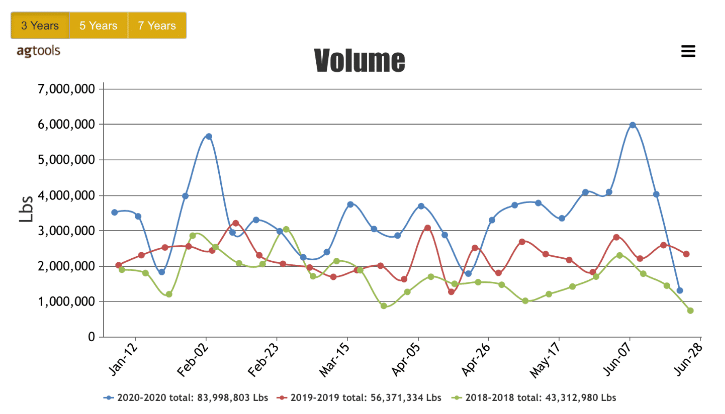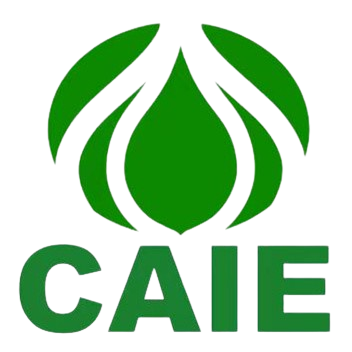The humble garlics clove, a staple in cuisines worldwide, is subject to a complex interplay of factors that influence its price in the global market. Understanding these dynamics is crucial for anyone involved in buying, selling, or simply consuming this pungent ingredient. Let’s peel back the layers and explore the key price drivers:
1. Supply and Demand: The Heart of the Matter
At its core, the price of garlic, like any commodity, hinges on the fundamental economic principle of supply and demand.
- Global Production: The amount of garlic produced globally each year is the primary driver of supply. Factors like weather patterns (drought, floods, favorable growing conditions), disease outbreaks, and the acreage dedicated to garlic cultivation all contribute to supply fluctuations. A bumper crop can lead to a surplus, putting downward pressure on prices, while a poor harvest can create scarcity and drive prices up.
- Global Demand: On the demand side, the appetite for garlic from major importing countries plays a crucial role. Population growth, rising incomes (leading to dietary shifts and increased consumption of flavor-enhancing ingredients like garlic), and evolving culinary trends all influence global demand. If demand outstrips supply, prices are likely to rise.
- Market Equilibrium: The garlic market constantly seeks a balance between supply and demand. The point at which the quantity supplied meets the quantity demanded is the equilibrium price. However, this equilibrium is a moving target, constantly adjusting in response to the factors mentioned above.

2. Seasonality: Riding the Harvest Waves
Garlics, unlike some crops available year-round, have distinct harvest seasons that significantly impact its price.
- Harvest Cycles: In the northern hemisphere, garlic is typically harvested in late spring and summer. Conversely, southern hemisphere producers harvest during their respective fall and winter months. These harvest periods dictate when fresh garlics floods the market.
- Price Fluctuations: As you might expect, garlic prices tend to be lower during peak harvest seasons when supply is abundant. Farmers are eager to sell their freshly harvested crops, and buyers have ample choices. However, as the harvest season ends and supply dwindles, prices typically rise due to increased storage costs and limited availability.
- Storage and Inventory: The ability to store and preserve garlic for extended periods plays a crucial role in mitigating price volatility throughout the year. Cold storage facilities help maintain quality and extend shelf life, allowing suppliers to meet demand even during the off-season. However, storage comes at a cost, which is factored into the price.
3. Quality and Variety: Not All Garlic is Created Equal
Just like any agricultural product, garlic quality can vary significantly, and this variability is reflected in its price.
- Garlics Grades: To standardize quality assessments, garlic is often sorted and graded based on factors such as bulb size (diameter or weight), uniformity (shape and size consistency within a batch), color (whiteness or purity of color for specific varieties), and the presence of blemishes (bruises, cuts, or discoloration). Higher grades, representing superior quality, command premium prices, while lower grades are typically sold at a discount.
- Variety Preferences: Beyond general quality grades, certain garlics varieties are prized for their unique flavor profiles, culinary uses, or even aesthetic qualities. For example, Spanish ‘Purple Stripe’ garlic, with its robust flavor and visually appealing purple streaks, often commands a higher price due to its limited availability and sought-after taste.
- Organic Premium: In recent years, consumer demand for organic produce has surged, and garlic is no exception. Organically grown garlics, cultivated without the use of synthetic pesticides, herbicides, or fertilizers, often carries a price premium. This premium reflects the higher production costs associated with organic farming practices and consumers’ willingness to pay a premium for what they perceive as a healthier, more environmentally friendly product.
4. Currency Fluctuations: The Global Trade Impact
Garlic is a globally traded commodity, and as such, its price is susceptible to fluctuations in currency exchange rates.
- International Trade: Major garlic-producing countries, like China and Spain, export a significant portion of their harvest to meet global demand. Similarly, countries with high garlics consumption but limited domestic production, such as the United States, rely heavily on imports. These international transactions are typically conducted in US dollars, making exchange rates a crucial factor.
- Currency Impacts: When a country’s currency weakens against the US dollar, its garlics exports become cheaper for foreign buyers. This can increase demand for their garlics, potentially driving up prices. Conversely, a strong domestic currency can make exports more expensive, potentially dampening demand and putting downward pressure on prices.
- Currency Hedging: To mitigate the risks associated with currency fluctuations, garlic importers and exporters often engage in hedging strategies. These strategies involve using financial instruments to lock in exchange rates for future transactions, providing price certainty in the face of market volatility.
5. Geopolitical Factors: Unpredictability and Its Consequences
The global garlic trade, like any international commerce, is vulnerable to geopolitical events and policies that can disrupt supply chains and influence prices.
- Trade Policies: Government-imposed trade barriers, such as tariffs (taxes on imports), quotas (limits on import quantities), or trade agreements (preferential trade terms between countries), can significantly impact the flow of garlics between nations. For example, a tariff on imported garlics can make it more expensive for domestic buyers, potentially protecting local growers but also increasing prices for consumers.
- Political Instability: Political unrest, conflicts, or instability in major garlic-producing or consuming countries can disrupt supply chains, leading to price volatility. For instance, if a major garlic-producing region experiences political turmoil that disrupts harvesting or transportation, global supply could be affected, leading to price spikes.
- Government Interventions: Governments may intervene in agricultural markets for various reasons, and their actions can influence garlics prices. For example, a government might implement export restrictions to ensure domestic supply, which could limit global availability and drive up prices. Conversely, subsidies or price controls aimed at supporting domestic garlics producers can impact market dynamics and influence prices.
6. Transportation and Logistics: From Farm to Table
The journey of garlic from the farm to the consumer’s table involves a complex web of transportation and logistics, all of which contribute to its final price.
- Shipping Costs: The cost of shipping garlic from producing regions to consuming markets is a significant factor in its price. Factors like fuel prices, shipping routes, and the mode of transportation (sea freight, air freight, trucking) all influence shipping costs. As transportation costs rise, so too does the price of garlic.
- Supply Chain Disruptions: Unforeseen events, such as natural disasters, infrastructure problems, or labor disputes, can disrupt supply chains, leading to delays and increased costs. For example, a port closure due to a hurricane could delay garlic shipments, potentially leading to spoilage and reduced supply, ultimately impacting prices.
- Storage and Handling: Proper storage and handling throughout the supply chain are essential for maintaining garlic quality and minimizing losses. Garlic is a perishable commodity, and improper temperature control, humidity, or handling can lead to spoilage, reducing the available supply and potentially increasing prices.
Table: Key Factors Influencing Garlics Prices
| Factor | Impact on Prices |
|---|---|
| Weather Conditions | Affects yield and quality, leading to price fluctuations |
| Soil Quality and Fertility | Influences production costs and yields |
| Farming Techniques | Affects productivity and cost-efficiency |
| Cost of Inputs | Higher input costs lead to increased garlics prices |
| Harvest Handling | Poor handling can reduce supply and raise prices |
| Storage and Transportation | Affects quality and availability, impacting prices |
| Global and Local Demand | High demand drives up prices, low demand reduces them |
| Trade Regulations | Tariffs and restrictions can increase prices |
| Currency Exchange Rates | Fluctuations affect export competitiveness |
| Inflation | Increases production and distribution costs |
| Economic Stability | Influences consumer demand and pricing |
| Seasonality and Cycles | Seasonal supply variations lead to price changes |
| Pest and Disease Outbreaks | Reduces supply and increases prices |
| Global Supply Disruptions | Natural disasters and pandemics disrupt supply chains |
Navigating the Garlics Market: A Complex but Essential Endeavor
Understanding the multifaceted factors that influence garlics prices is essential for anyone involved in this global market. By staying informed about global production trends, seasonal influences, quality considerations, geopolitical developments, and transportation dynamics, market participants can make more informed decisions, mitigate risks, and navigate the price fluctuations inherent in this aromatic and essential ingredient.
A comprehensive guide to the garlic market:Top 10 Secrets of the Garlic Market: A Comprehensive Guide
